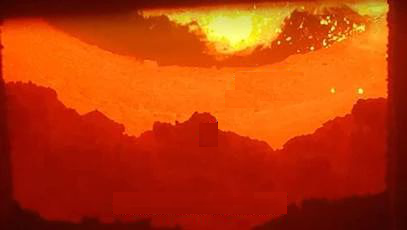Due to the stricter domestic environmental protection requirements and the higher and higher disposal costs, the waste sent to the hazardous waste disposal center is generally concentrated as much as possible, resulting in the higher calorific value of such waste, especially solid waste and distillation residue. In most cases, it is between 3,000~5,000Kcal/kg. In order to maintain a better combustion effect, the rotary kiln is generally operated between 950 and 1,150°C, and the melting point of hazardous waste ash is generally between 1,000 and 1,200 (close to or slightly higher than the maximum combustion temperature). In addition, the materials fed into the rotary kiln are generally more complicated, the heating value fluctuates greatly, the material feed is uneven, and the material stays in the kiln for a long time (usually 60~90 minutes), it is difficult to adjust the combustion in time Therefore, the temperature in the kiln generally fluctuates to a certain extent, and it is inevitable that the local temperature in the kiln will be too high to cause the ash and slag to melt, and then adhere to the inner wall of the rotary kiln. With the rotation of the rotary kiln and due to the gradient distribution of the temperature of the lining, part of the molten ash may solidify on the lining material to form a new kiln skin. As the kiln rotates, part of the ash and slag may be melted again and reach a certain balance, so that the kiln skin will not thicken. However, if the balance is not reached and there is less ash falling, the kiln skin will gradually thicken, and a ring will be formed after reaching a certain level, as shown in the following figure:
The main reasons for the formation of loops are as follows:
1. Operation mode of rotary kiln
Depending on the operating temperature, the rotary kiln has two operating modes: dry slag mode and molten slag mode. The dry slag operation mode is the most common in hazardous waste incineration, and it has been proved to be the most reliable operation mode. It is generally considered that the dry slag mode is below 925℃. Normal compatibility can ensure that the ash does not melt. The possibility of circle is relatively small. The other mode is the slag mode. The rotary kiln will run at a higher temperature to melt the ash formed after incineration into a liquid state. The operating temperature of the conventional slag mode is greater than 1,200°C. This mode is because the ash is in a molten state. , It is generally more difficult to make a loop. If the operating temperature is between 950~1,200℃, its operation is just between the dry slag and molten slag operation modes, which can be called semi-molten operation mode. It is easier to produce partial melting but not completely melting. , And then with temperature changes and fluctuations, part of the molten slag is solidified on the lining of the rotary kiln, and at the same time, some high melting point ash is wrapped, and the kiln skin gradually thickens, which causes ring formation.
2. Stability of feed and air distribution of rotary kiln
Hazardous waste includes liquid, solid and semi-solid, especially the solid waste composition and form are more complex. Generally, the dominant solid waste feed of rotary kiln is mainly intermittent feed such as grab + pusher or chute. Some rotary kilns also intermittently treat some special low-flash-point barreled waste liquid directly into the furnace. Because intermittent feeding will cause large fluctuations in material incineration, and will affect the stability of the air distribution, resulting in large fluctuations in the temperature of the rotary kiln, this has also become one of the important reasons for ring formation in the rotary kiln.
3. Chemical composition and melting point of ash
The main components of the ash at the bottom of the rotary kiln are some inorganic oxides, such as SiO2, Al2O3, FeOx and CaO. In addition, due to the high salt content of some hazardous waste, it also generally contains a certain amount of low melting point alkali metal salts such as Na/K salt. If the content of alkali metal components is relatively high, due to its low melting point, if the waste into the furnace contains high salt content, it is easy to concentrate in the kiln, resulting in ring formation in the kiln. According to experimental research results in the literature, when the contents of SiO2, Al2O3 and CaO are increased respectively, the ash melting point temperature rises to varying degrees, so the composition of the bottom slag has a greater impact on the ash softening temperature. According to on-site operating experience, in this case, even when the rotary kiln is operating at a lower temperature (for example, 850~950℃), more melts can be found in the kiln.
In summary, when hazardous waste is incinerated in a rotary kiln incinerator, if the operation is improper in actual operation, it is easy to cause the problem of ring formation in the kiln. When the ring formation is severe, the gravity load in the kiln will increase, the material will not run smoothly, and the refractory materials will be broken and damaged, and the incineration system will be forced to shut down.



